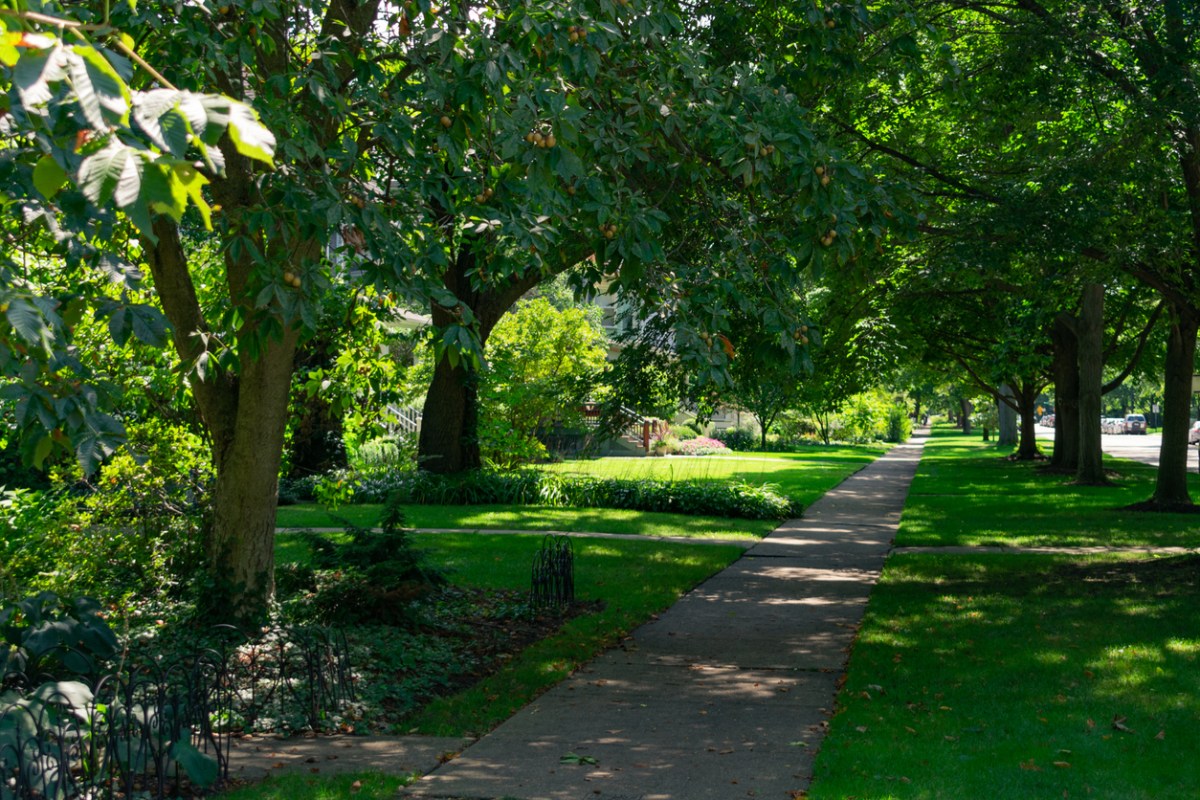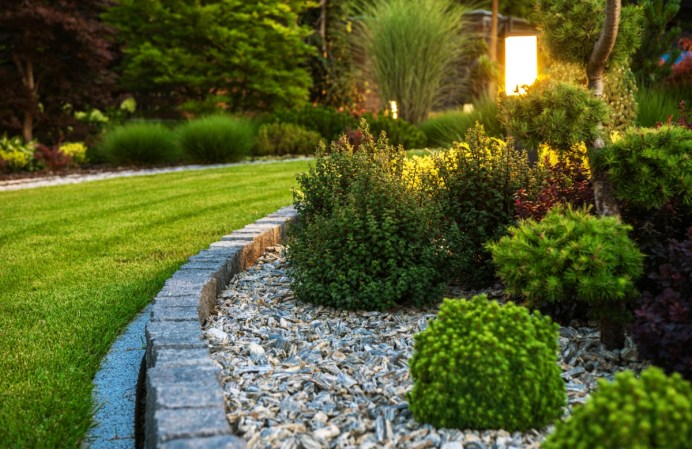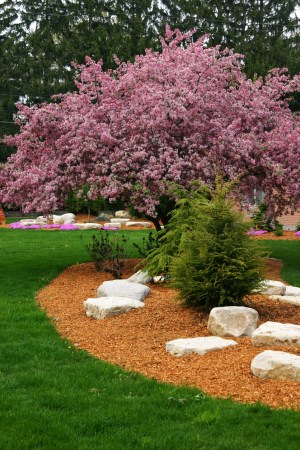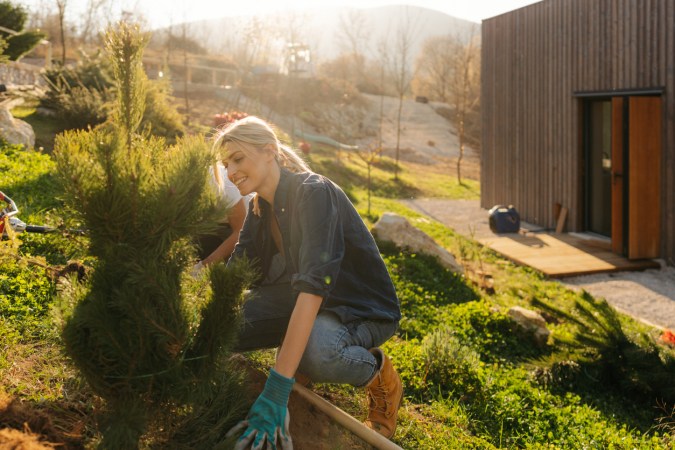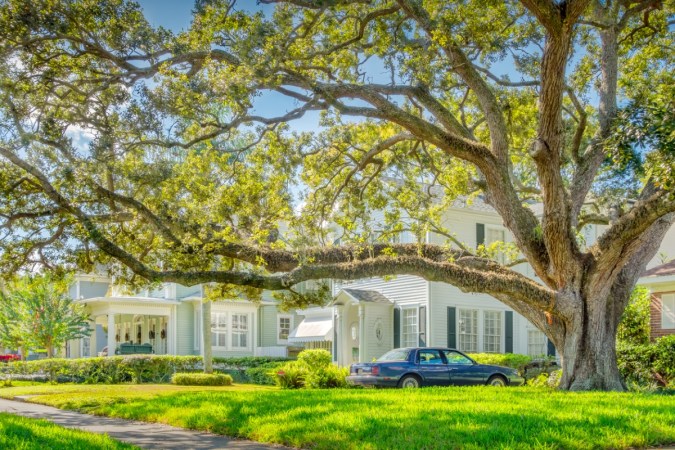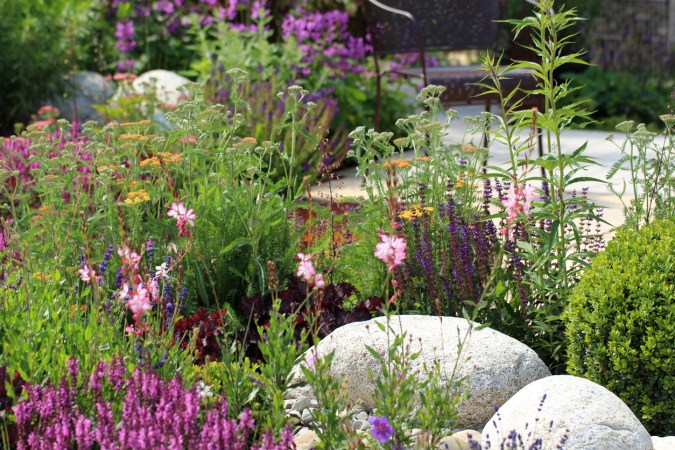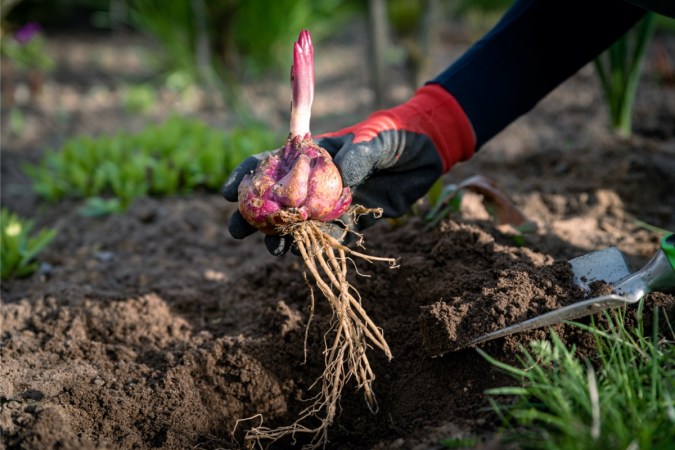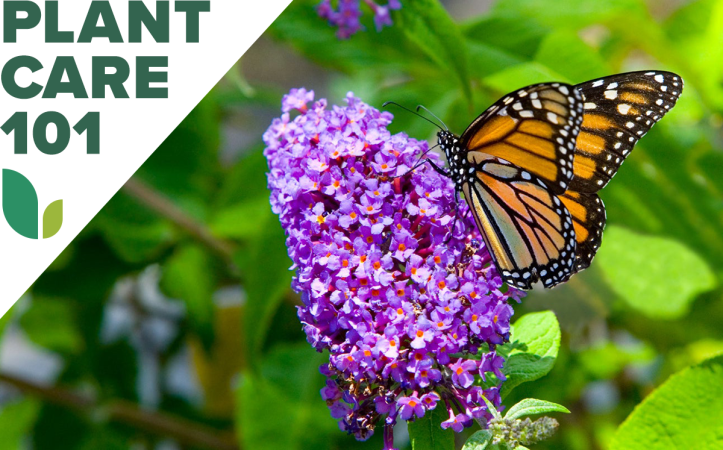We may earn revenue from the products available on this page and participate in affiliate programs. Learn More ›
Sitting under the wide canopy of a tree can cool you off on a hot summer day and even lower home-energy costs. If your landscape is treeless, the sooner a new tree grows a shady canopy, the better. A fast grower adds 25 inches in height each year, and the fastest-growing trees rise from 10 feet to at least 25 feet tall in 10 years.
Following is a variety of moderate and fast-growing trees that can shade in your yard. Once you identify the varieties you like best, check with local experts before planting them. They grow so quickly that a planting mistake can be difficult to undo. Be sure you choose the best options for your landscape, climate, and growing conditions.
The Pros and Cons of Planting Fast-Growing Shade Trees
Planting trees has a lasting impact on your property, and on the world in a broader sense. Before you pick up a shovel, it’s wise to consider all aspects of your decision and the long-term effects, both good and bad, that result from planting a shade tree.
Pros
- Trees help protect the environment by reducing noise pollution, air pollution, air temperature, heat, and sunlight.
- Fast-growing shade trees deliver more rapid results, so your landscape will mature quickly, filling in bare spaces and adding shade and privacy to your yard in as few years as possible.
- A shade tree can help lower temperatures in outdoor living spaces by as much as 25 degrees, and can even save some cooling costs by shading windows.
- Trees provide food and shelter for wildlife. Fast-growing trees can offer these benefits more quickly.
Cons
- Trees that grow very fast might have weaker wood that can be damaged easily during storms and high winds.
- Some fast-growing trees have aggressive root systems that can be invasive, causing damage to structures, sidewalks, pipes, and septic systems.
- Fast-growing trees often require pruning sooner and more often.
- Planting an evergreen shade tree might block helpful winter sun on a home, so consider placement carefully for trees that don’t drop their leaves in fall.
RELATED: The 15 Best Trees for Any Backyard
1. American Sweetgum (Liquidambar styraciflua)
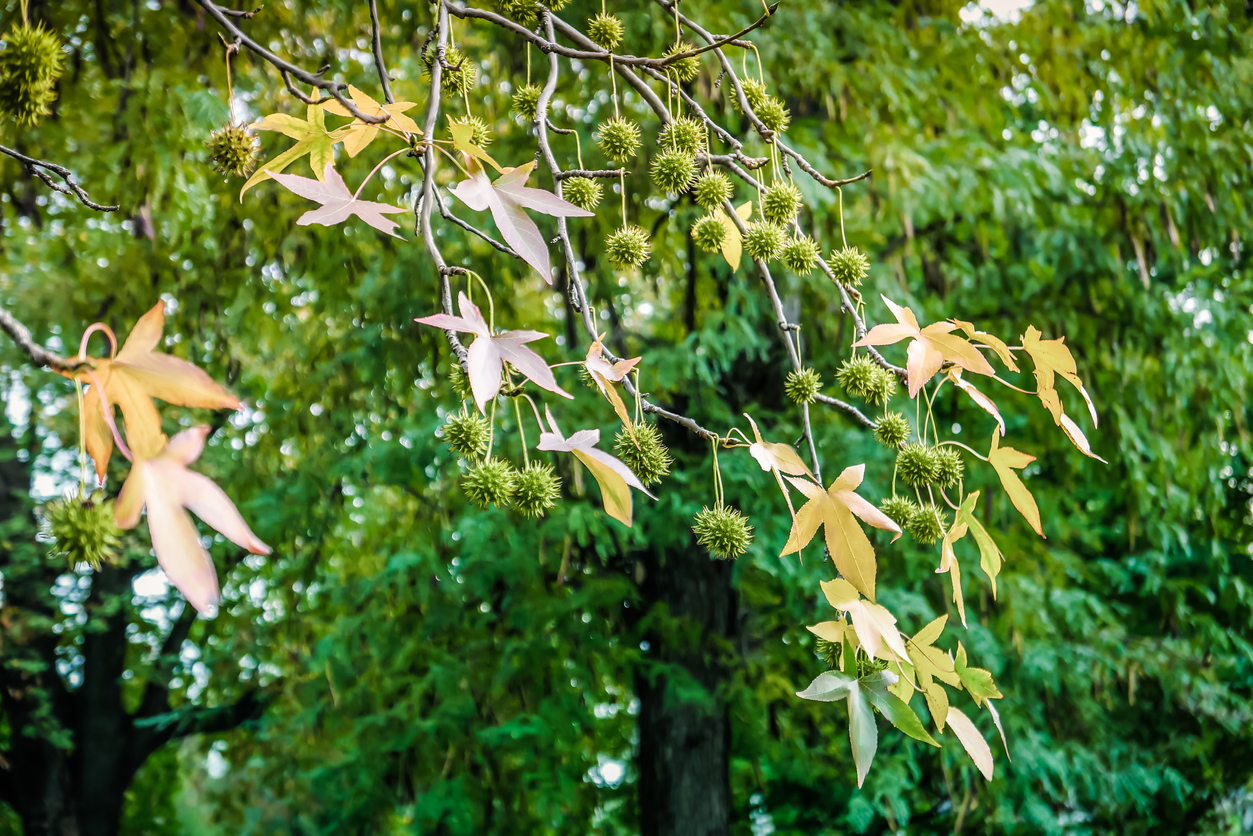
Star-shaped leaves of five to seven lobes that turn red, orange, yellow, and purplish in autumn make this one of the most attractive shade trees. Pollinated primarily by wind, it produces ornamental fruit that looks like spiky gum balls; these look interesting, but they can be messy. It also produces resin that can be used for chewing gum—thus, the name. Its wood is a common source of hardwood and plywood. Grown in zones 5 through 9, American sweetgum can tolerate moist soil, thanks to its long taproot, and prefers full sun. Growing at a rate of 1 to 2 feet per year, it can reach 80 feet tall.
RELATED: The Best Trees to Plant for Fall Foliage
2. American Sycamore (Platanus occidentalis)
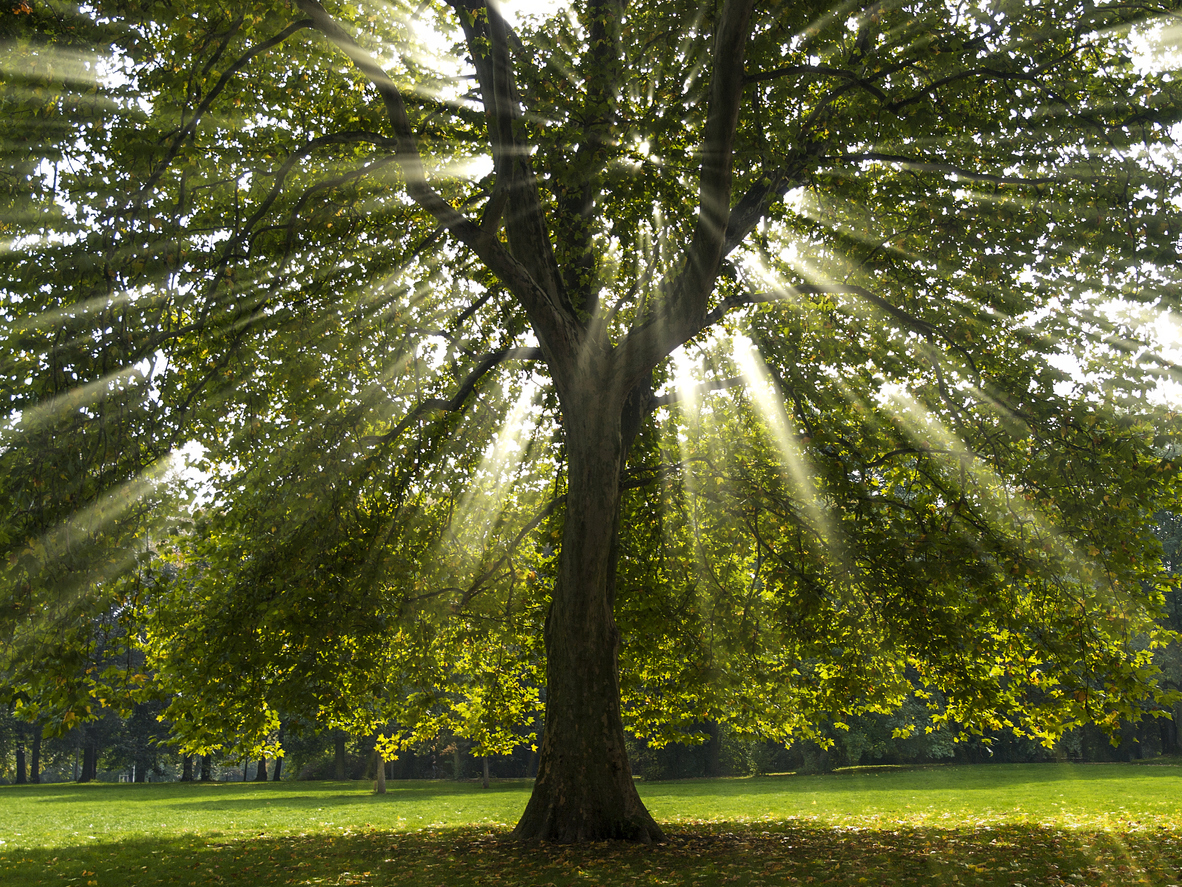
Among the shade trees that grow fast, American sycamore can reach up to 100 feet at a pace of about 2 feet per year. Also known as the plane tree, it is an American staple for urban and park settings. Easily identified by their patchy, peeling bark that reveals creamy white spots or the round seed balls they produce, sycamores have large leaves with serrated lobes. They grow in full or partial sun in zones 4 to 9 and can tolerate pollution, wind, wet soil, and drought. However, shallow, widespread roots can damage pipes and pavement. They’re prone to fungus, and their trunks become hollow with age.
3. Arborvitae (Thuja spp.)
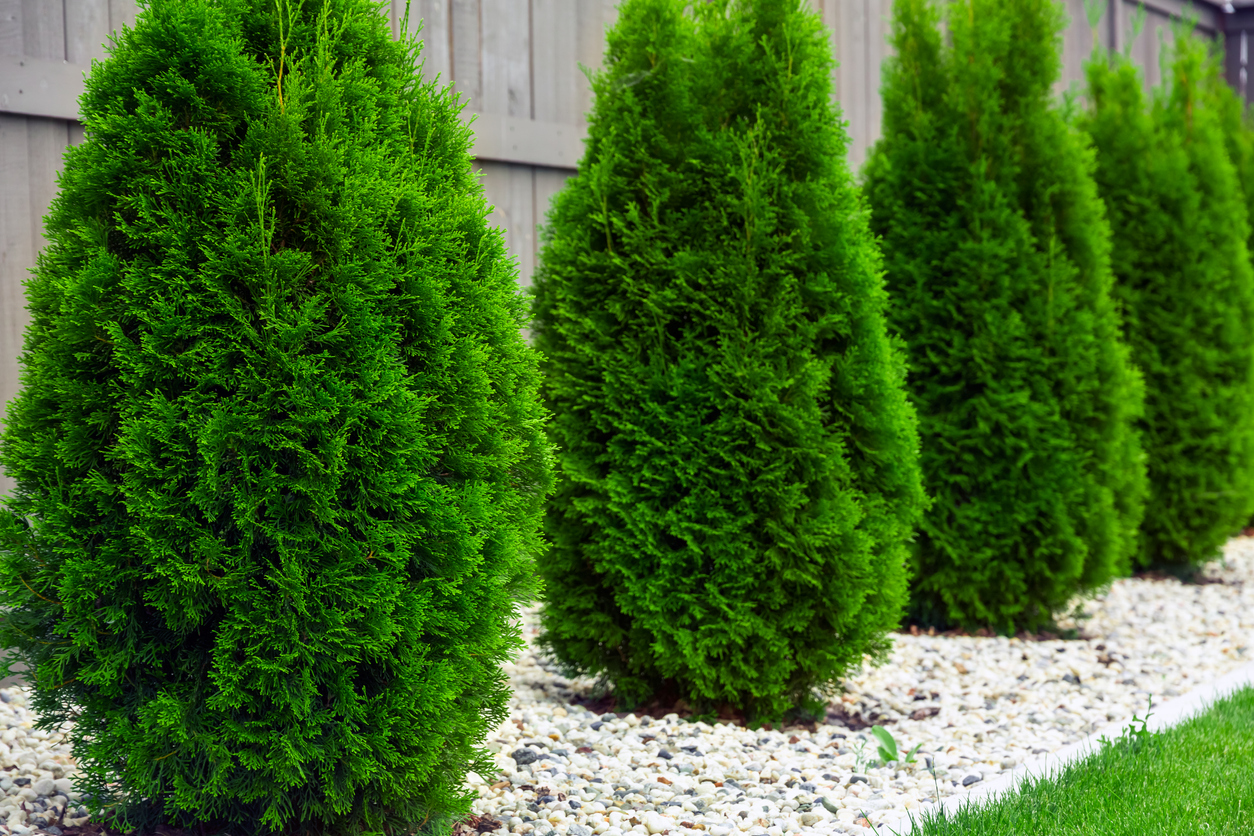
Though it lacks a wide shade canopy, this tall, slender, conical-shaped evergreen is frequently planted in a hedgerow for shade, or as a windbreak or privacy screen along property lines in zones 3 to 7. Its flat, lacy, emerald-green needles are soft and fragrant. This North American native can tolerate many soil types, but it prefers moist, well-draining soil and full sun. Arborvitae can be vulnerable to winter wind burn and heavy snow, which can break branches, but it’s rarely bothered by pests or disease. Ultimately, some species can reach 70 feet or taller at a rate of 3 to 4 feet per year.
RELATED: Solved! Why Is My Arborvitae Turning Brown?
4. Dawn Redwood (Metasequoia glyptostroboides)
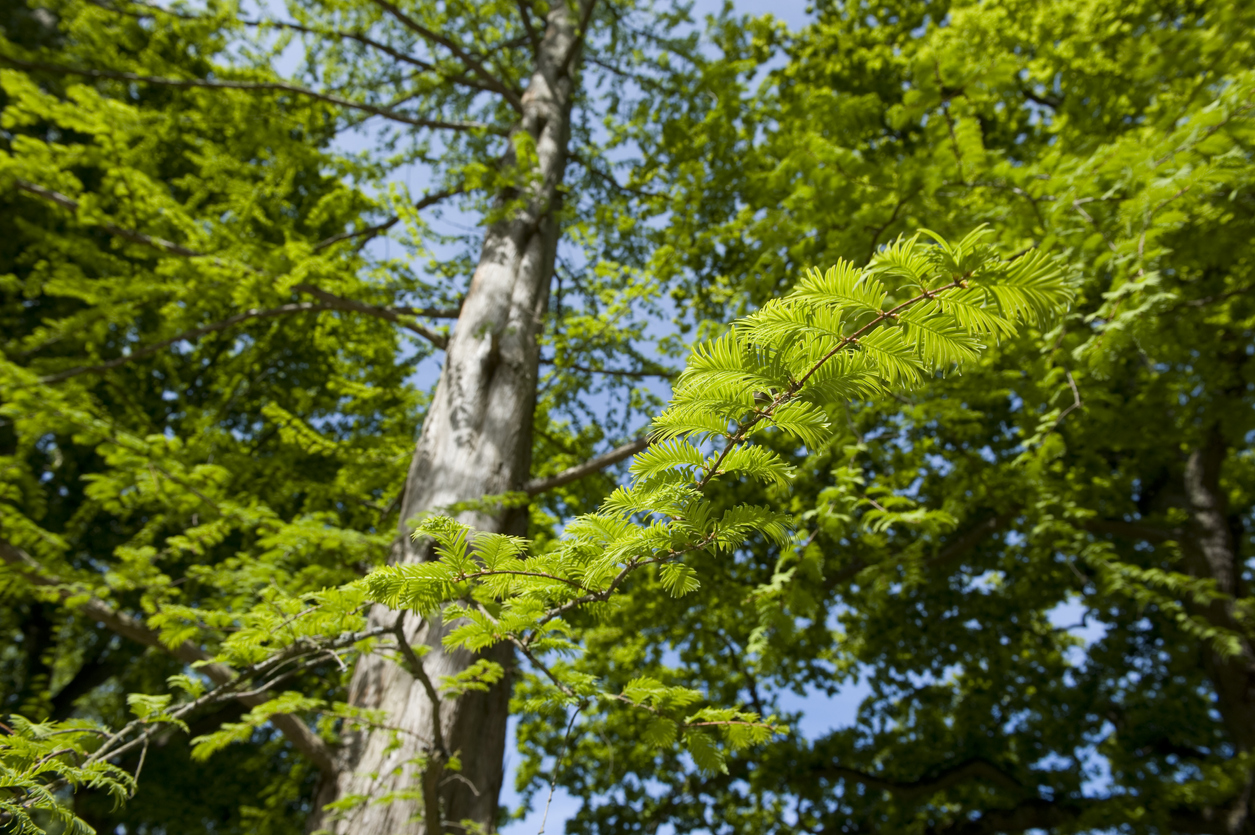
After 2 million years, the dawn redwood is once again growing in North America, thanks to the discovery of a living fossil in China. This majestic beauty features fine, feathery needles; peeling reddish-brown bark that becomes deeply fissured as the tree matures; and rounded cones. The dawn redwood is one of a few deciduous conifers. Growing 75 to 100 feet tall at a rate of 2 to 3 feet per year, it forms a pyramidal shape with a wide, flaring base. The tree likes full sun in zones 5 to 8 and requires consistently moist soil.
5. Eastern White Pine (Pinus strobus)
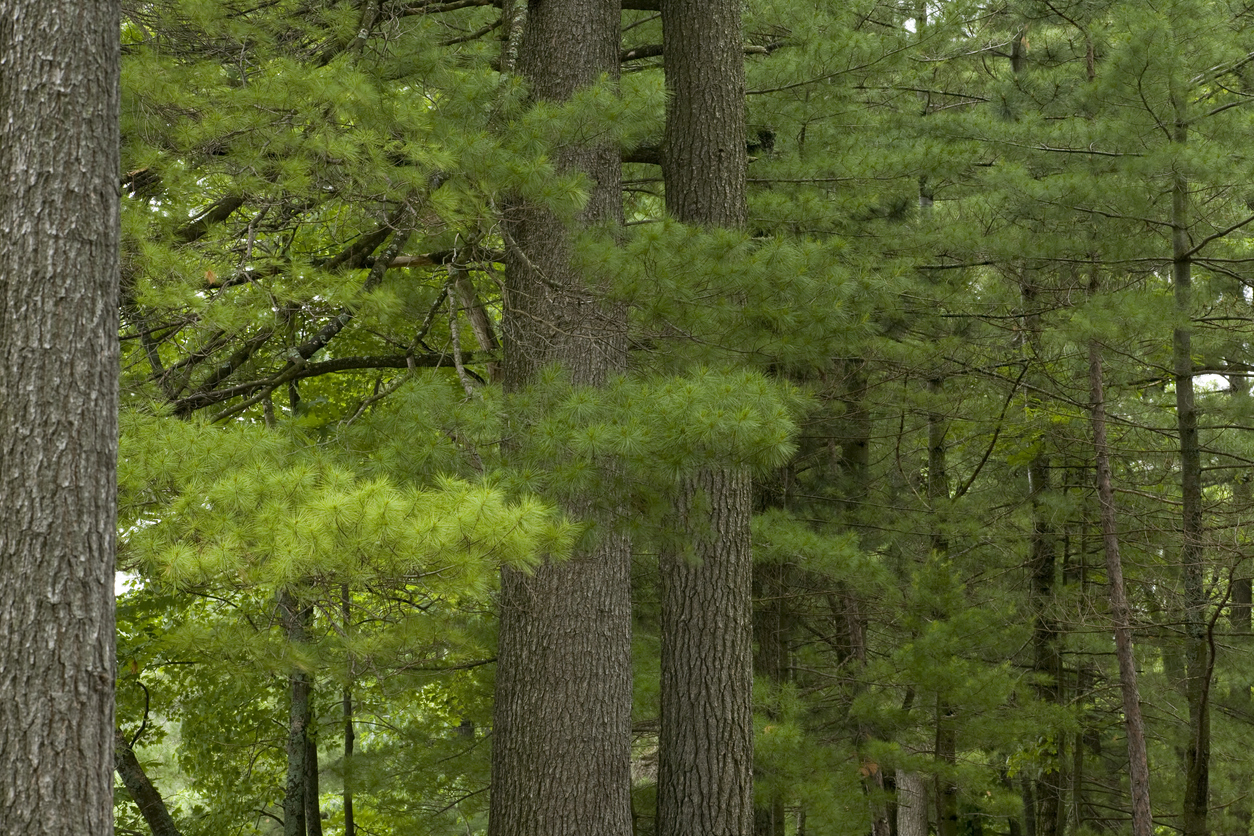
This soft-needled pine tree with long, gray-green foliage grows in a conical shape and is so attractive, it’s often considered an ornamental plant. It can be planted as a specimen tree or as background landscaping for colorful shrubs in zones 3 through 8. This evergreen can be planted in early fall or spring. The eastern white pine can grow to 80 feet or taller when planted in full sun and well-draining, moist, acidic soil. It can grow as much as 2 feet per year and eventually have a 40-foot spread. However, it’s sensitive to salt, air pollution, pest infestation, and other assorted tree diseases, including blight and rusts.
RELATED: The Best Time to Plant a Tree
6. Empress Tree (Paulownia tomentosa)
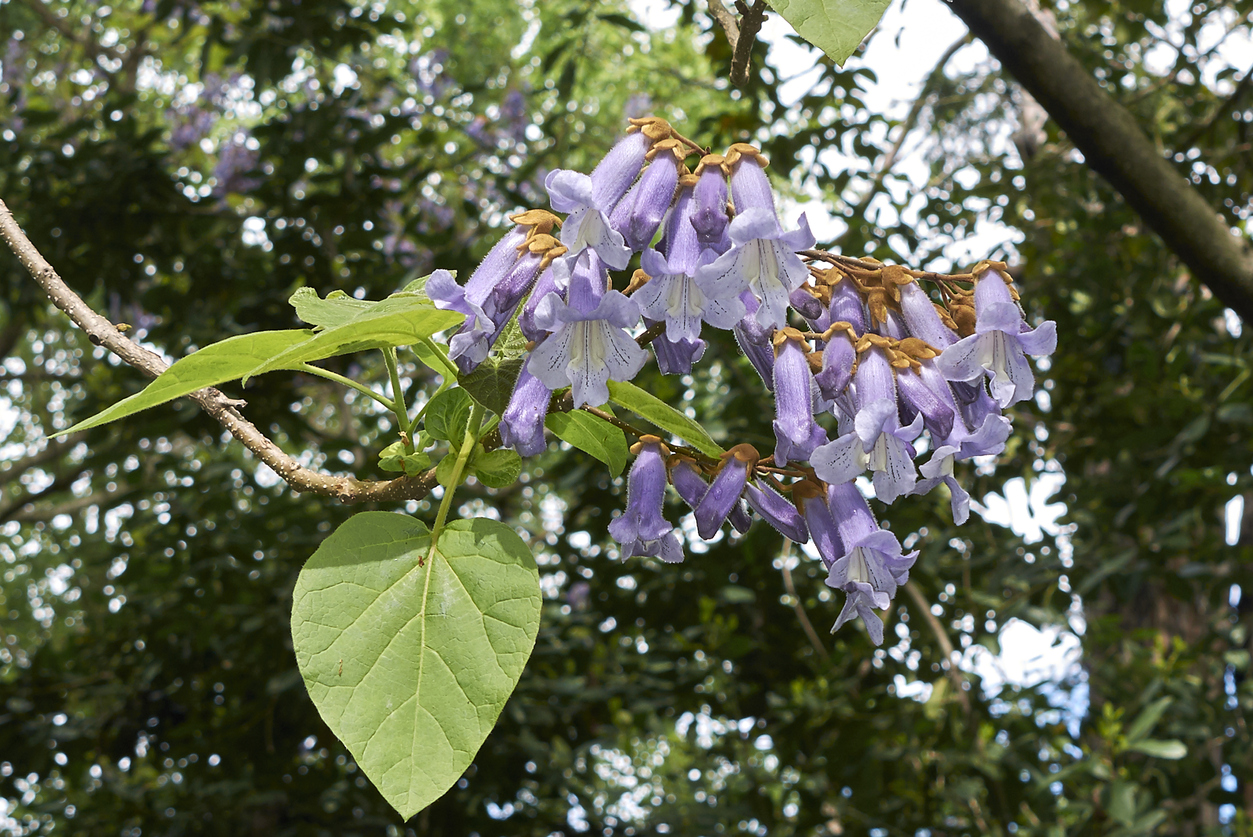
In addition to growing up to 15 feet each year, the empress tree (also called princess tree) offers delicate blossoms that perfume the air with a vanilla scent in a dense shade canopy. That said, this tree is not a great fit for all regions of the U.S.: Some locations in the East (Pennsylvania south to Georgia and west to Missouri) consider it invasive. Paulownia will thrive in zones 5 through 9, but can be messy and hard to get rid of once it declines. If it is cut down, the roots send up new growth a few feet out.
7. Hackberry (Celtis occidentalis)
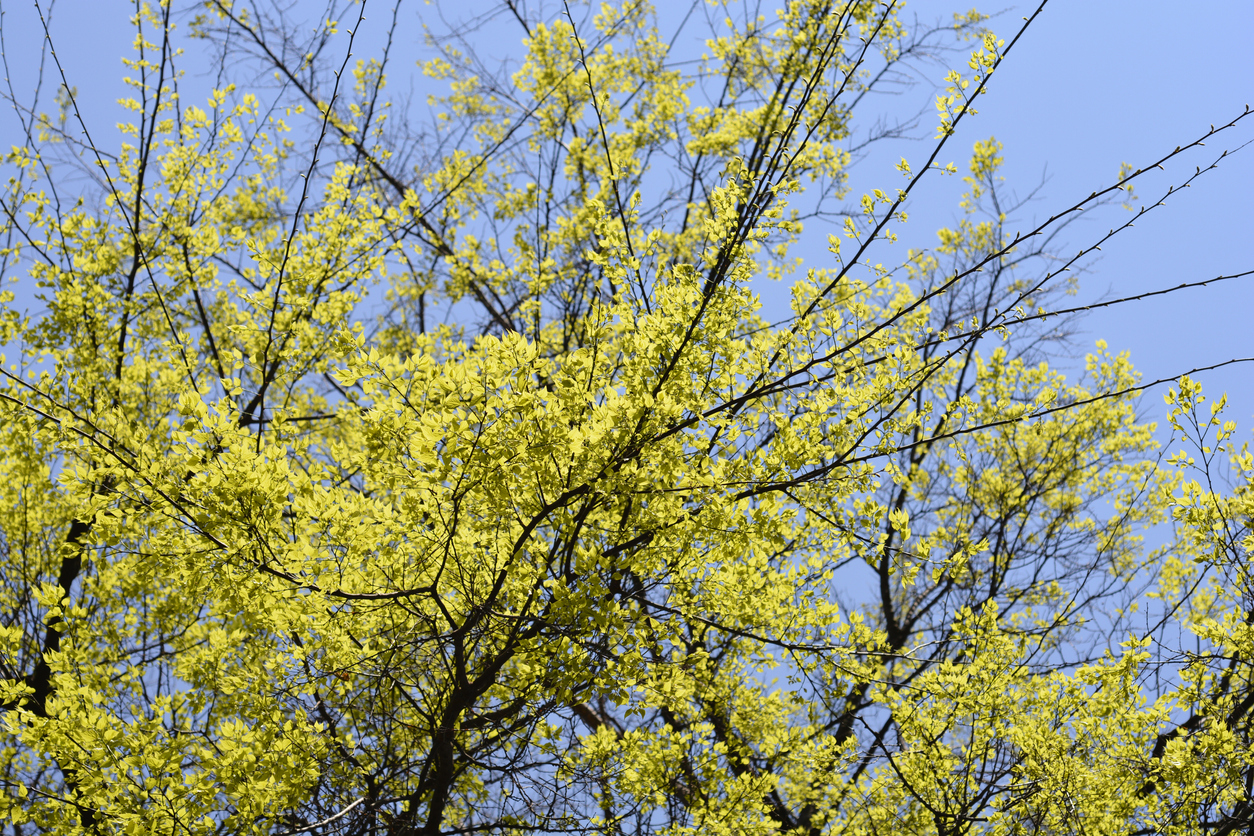
An extremely hardy tree, the hackberry can tolerate a range of temperatures and conditions, which is why it’s used often in urban landscapes. Heat, drought, salt spray, wind, ice, and brief flooding don’t bother this tree with its dense root system. Found in zones 2 through 9, hackberry grows 1 to 2 feet per year, eventually reaching 40 to 60 feet tall. It produces serrated leaves that can be dull or glossy green. Its small, dark red fruits (drupes) turn purple in mid-autumn and last late into winter, serving as food for several bird species. Hackberry’s distinctive bark has a corky texture that’s reminiscent of stucco.
8. Washington Hawthorn (Crataegus phaenopyrum)
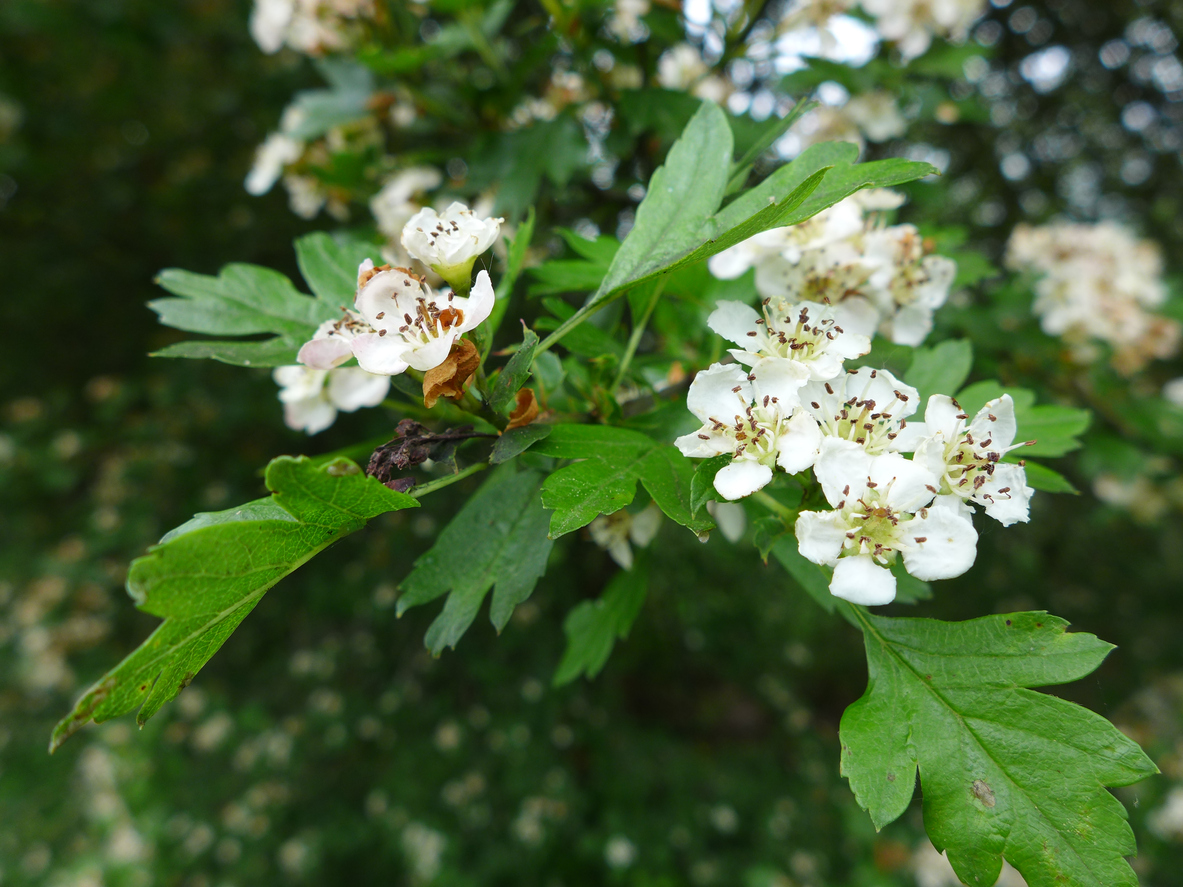
Though the Washington hawthorn grows at a more moderate rate (1 to 2 feet per year) than other fast-growing shade trees, it is a North American native that’s super valuable to wildlife. Birds and some animals eat the tree’s bright red berries in winter. In spring, the branches fill with showy white flower clusters. This shade tree thrives in USDA zones 4 through 9 and reaches a mature height of 25 to 30 feet, with a 25-foot-wide canopy. It can survive on an average amount of water and is fairly drought-tolerant once established.
RELATED: 9 Things You Can Do to Keep Birds Well Fed in Winter
9. Japanese Zelkova (Zelkova serrata)
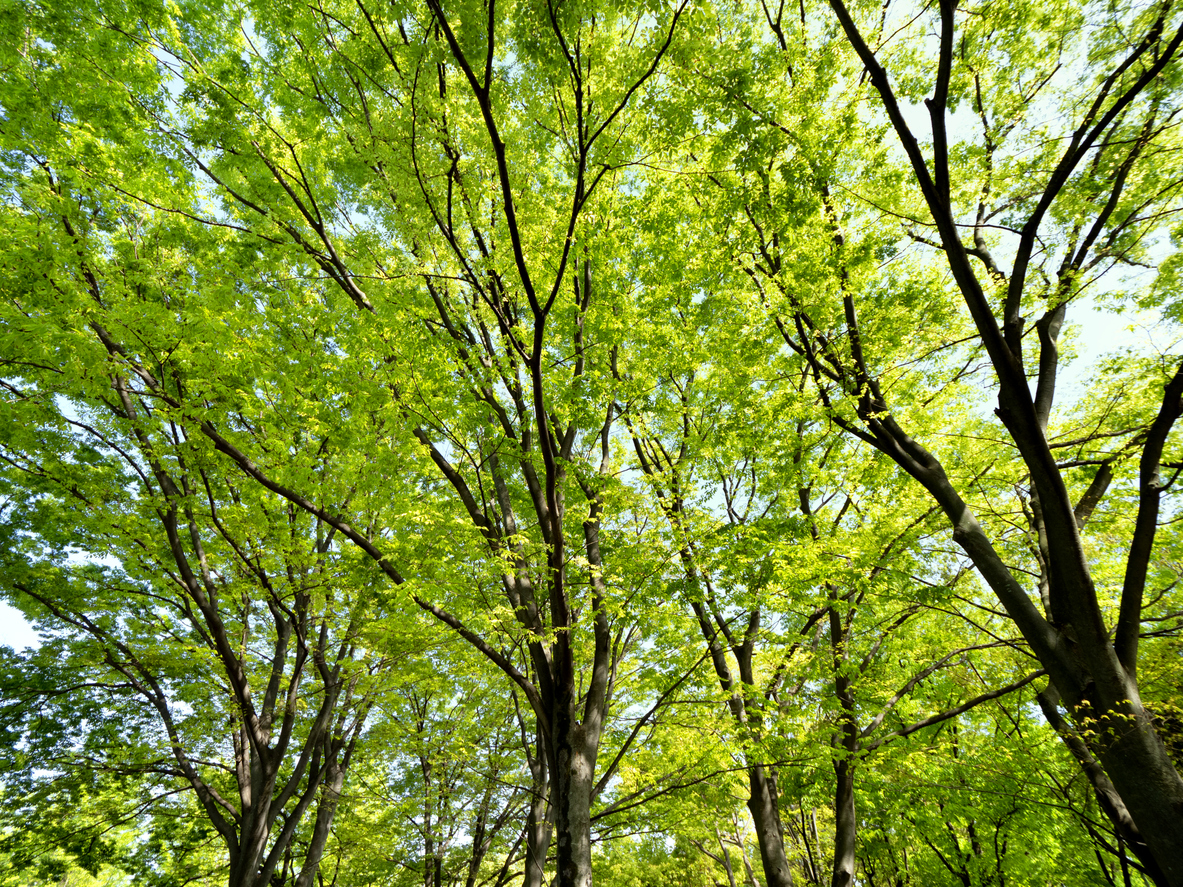
Related to the elm but untouched by Dutch elm disease, zelkovas grow quickly into a vase-shaped tree that has golden foliage in the autumn. The bark can add some color as it matures as well. Watch it quickly grow to 50 to 80 feet high with a whopping 65-foot reach. The Japanese zelkova is not native to North America, but it’s tough enough to handle urban conditions in USDA zones 5 through 8. Once well established, it can handle some drought, too.
10. Northern Catalpa (Catalpa speciosa)
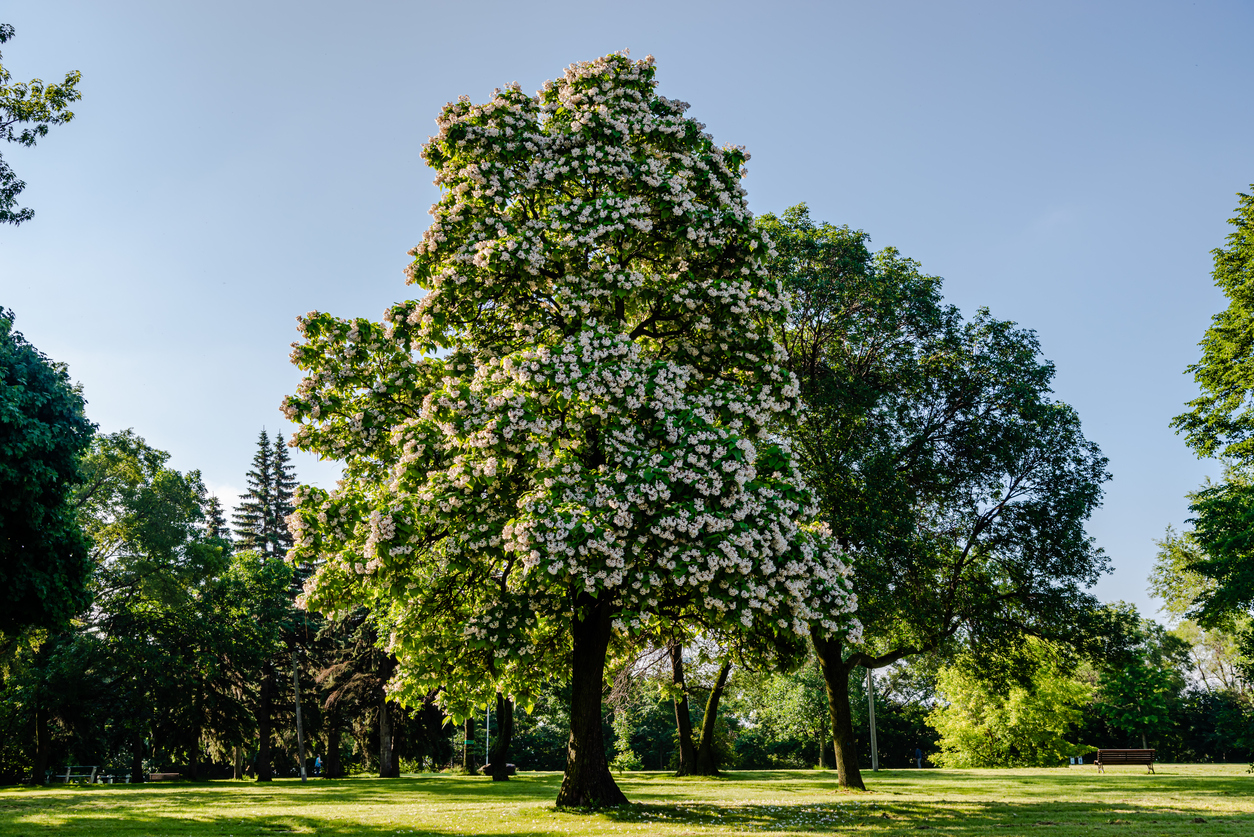
A showy tree with fragrant white flowers in late spring and early summer, giant heart-shaped leaves, dangling seed pods that look like beans, and twisting trunk and branches, the northern catalpa (or cigar tree) is well loved in USDA zones 4 through 8. This shade tree can tolerate urban conditions and provides dense shade. A fast grower at 1 to 2 feet per year, it tops out at 40 to 70 feet. Preferring full to partial sun, northern catalpa tolerates most well-draining soils. This beauty’s downsides, however, include weak wood, brittle branch structure, and the mess of spent flowers and dried seed pods.
11. Northern Red Oak (Quercus rubra)
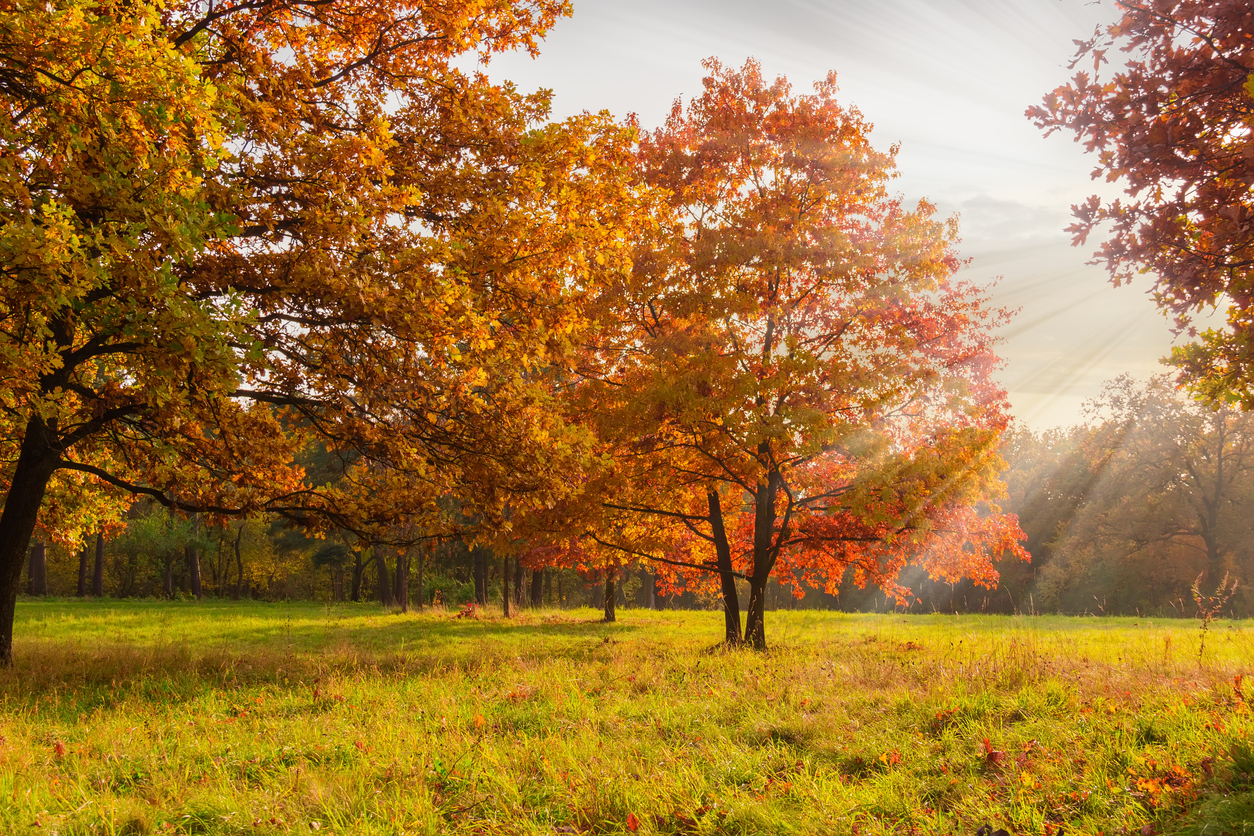
This Midwest native is one of the fastest-growing oaks and one of the taller trees, reaching up to 75 feet at a growth rate of about 2 feet per year. Its long, heavily lobed leaves turn brilliant red in the fall. At the same time leaves develop in the spring, the tree produces yellowish-green catkins. Grown in full sun in USDA zones 3 through 8, the stately northern red oak features a dense crown that offers ample shade. Suitable for urban sites, it’s a versatile and beautiful tree that adds height to the landscape for a natural look.
RELATED: How to Plant a Tree
12. Nuttall Oak (Quercus nuttallii)
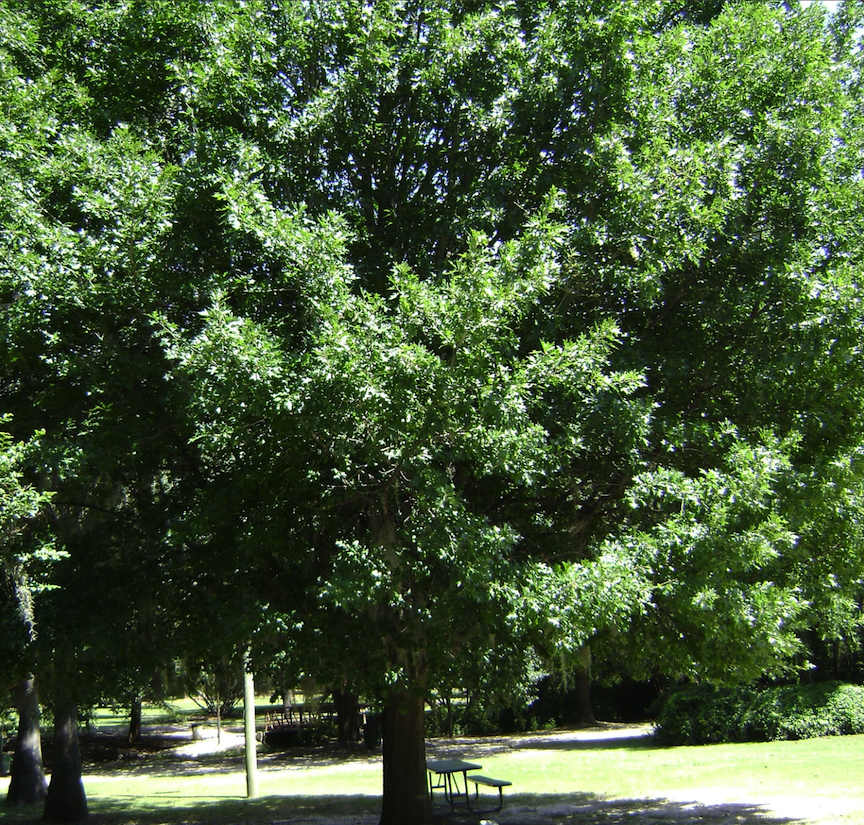
Great for both urban and suburban landscaping, the Nuttall oak can survive almost every soil condition from wet to moderate drought. In zones 5 through 9, it grows 2 to 3 feet per year under full sun, reaching a height of 40 to 60 feet, with a similar spread. Dark-green leaves with deep lobes turn yellow, orange, and red in the fall. It produces acorns, but no flowers. This easy-care oak has few problems from insects or disease, and it develops a good branching structure that makes it an excellent shade tree. Its canopy becomes more rounded with maturity for an attractive landscape shade tree.
13. Paper Birch (Betula papyrifera)
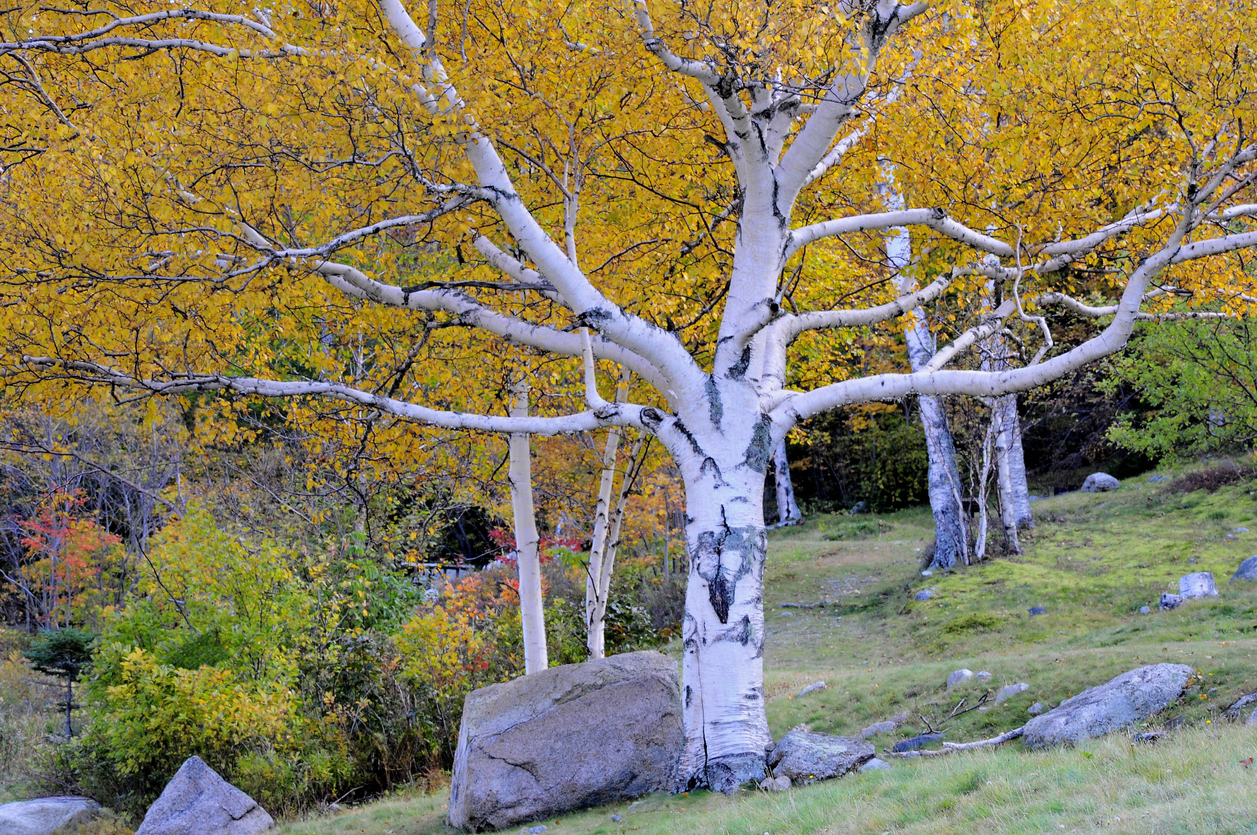
A standout with its peeling white bark, paper birch, also called canoe birch, produces dappled shade beneath a lacy canopy of double-toothed leaves on a clump of trunks. This short-lived, water-loving tree doesn’t tolerate drought conditions. It likes moist soil so much, it’s often found along stream banks. Because they suffer from heat, dry conditions, and pollution, paper birch trees are best grown in rural settings. They prefer partial sun and grow wild along the margins of woodlands. Their branches can break from strong winds or heavy snow, but they grow 2 feet per year in zones 2 to 7 until reaching 60 to 70 feet tall and 35 feet wide.
14. Pin Oak (Quercus palustris)
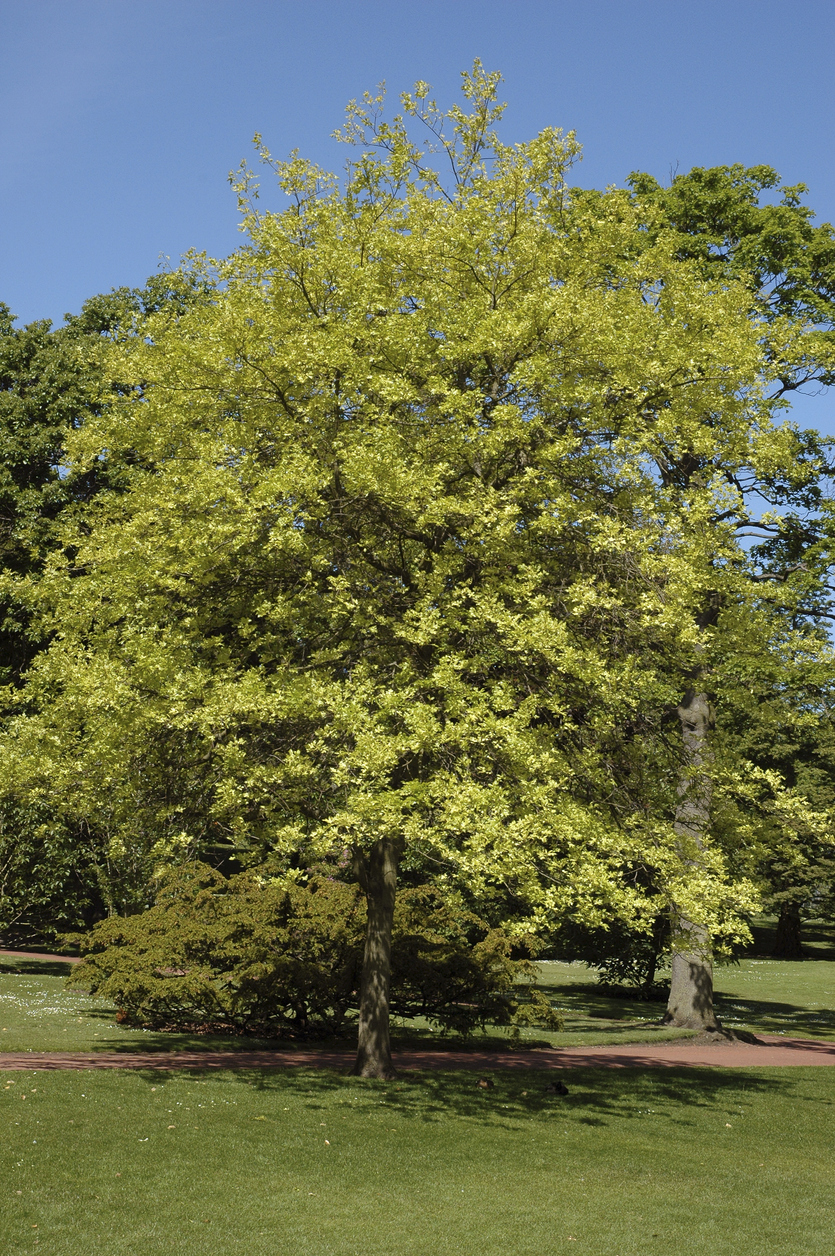
At a rate of 2 to 3 feet per year, the pin oak is one of the fastest-growing trees for shade, which could explain its widespread use. Pendulous lower branches, horizontal middle branches, and upright upper branches mark this 60- to 70-foot tree that grows in zones 4 through 8, but not at high elevation or on slopes. Found near rivers, streams, and lakes, the pin oak tolerates heat, air pollution, and wet soils, but prefers moist, well-draining acidic soil and full sun. Glossy, deeply lobed leaves turn from dark green to deep red and bronze in fall and hang on into winter on dense branches. Brown flowers aren’t showy. It produces dense shade, has strong wood, and resists damage from most pests.
RELATED: The Dos and Don’ts for Landscaping Around Trees
15. Poplar Hybrids (Populus hybrids)
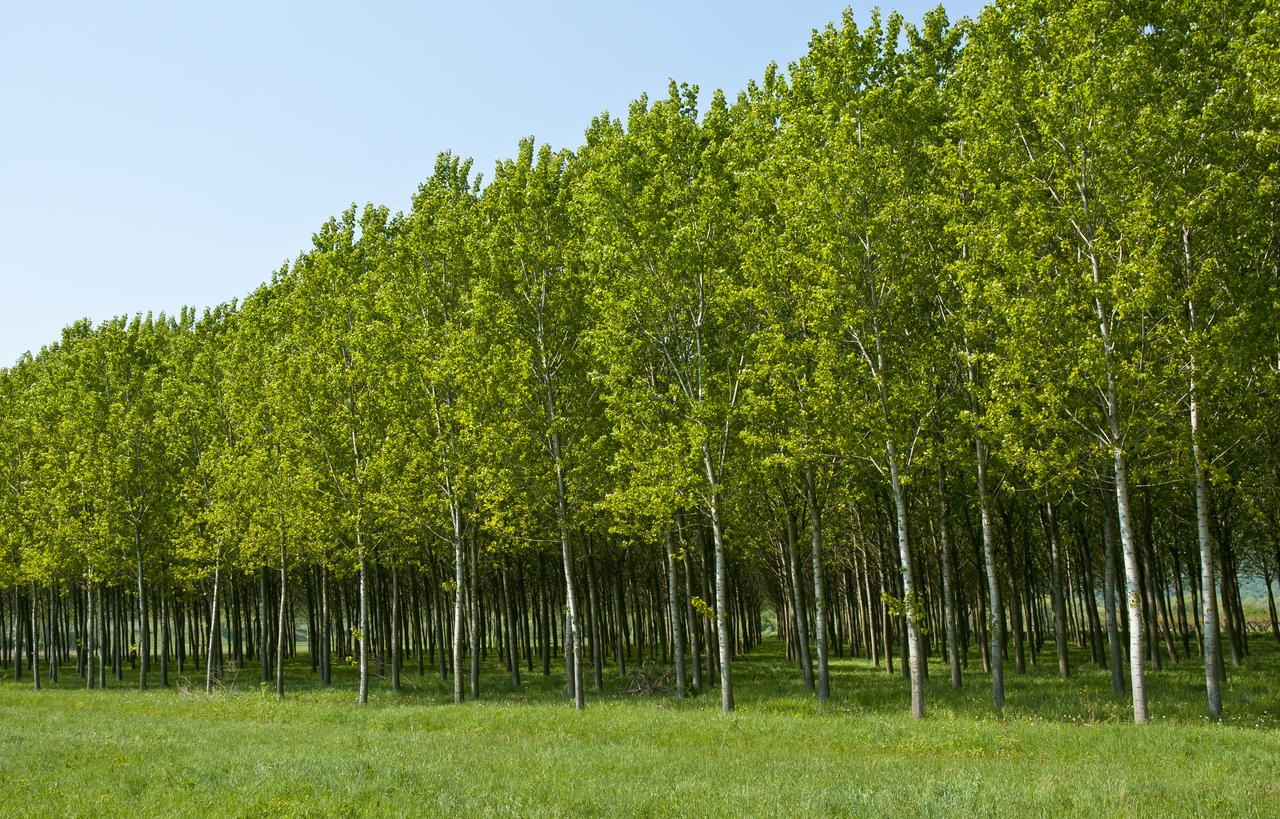
Tall, slender and flexible enough to endure wild storms, hybrid poplars are fast-growing shade trees that can soar to nearly three stories within 5 years. These cold-hardy, elegant trees look great for high privacy screens and planted in rows, but give them some distance from sidewalks and sewer lines, since their roots can be invasive. Brownish-red blooms appear in spring, and the silvery leaves turn yellow in fall. Poplar hybrids can grow in nearly any type of soil.
RELATED: 14 Best Plants for Under Trees
16. Quaking Aspen (Populus tremuloides)
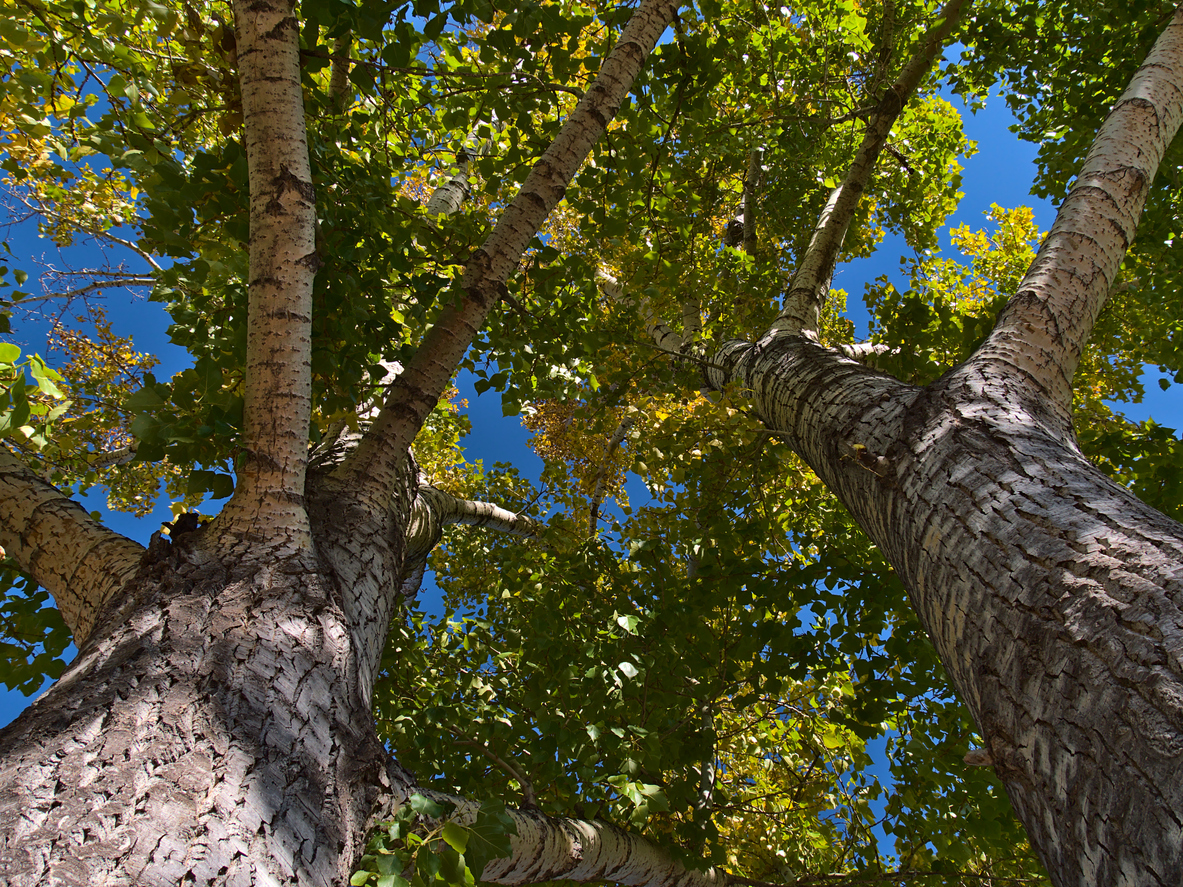
Also known as trembling aspen, this Utah state tree has the most extensive native range on the continent, growing in zones 1 through 7. Loved for their yellow fall foliage, which shakes in the breeze, aspen trees can grow 2 feet per year until they reach about 50 feet tall. They reproduce by sending up shoots from the roots, spreading quickly to create a stand. The bark carries out photosynthesis and produces sugar, which attracts deer, elk, and moose. Quaking aspens are best planted in spring in loamy, well-draining soil where they will get full sun.
17. Red Maple (Acer rubrum)
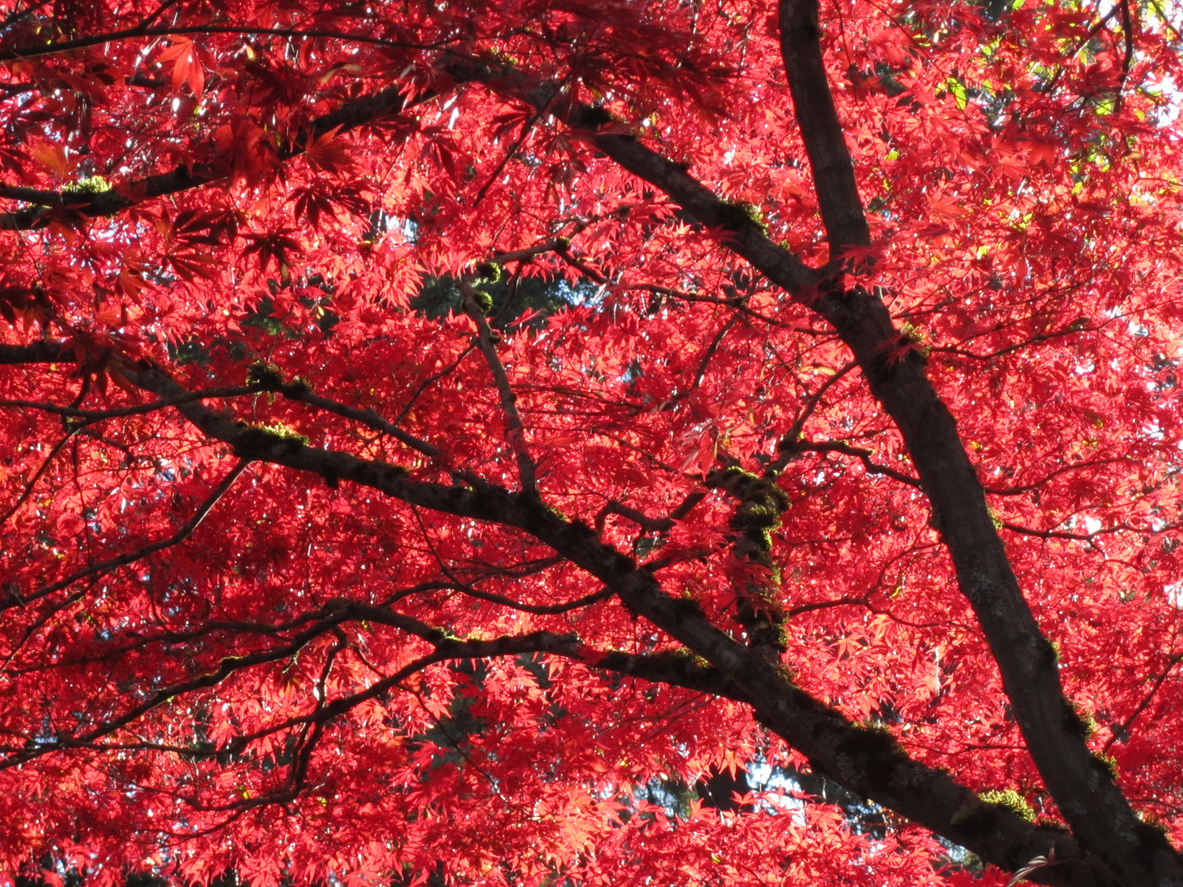
From red blossoms in spring to fiery foliage in fall, this highly adaptable red (or scarlet) maple certainly lives up to its crimson reputation, particularly the vivid October glory cultivar, which produces red flowers in spring before green glossy leaves appear. Those leaves turn orange to red for a stunning fall display. This shade tree thrives in USDA zones 4 to 9 and grows faster than many other maple trees, with the exception of sugar maple. Give the North American native red maple full sun and expect a 35-foot spread and at least 40-foot height.
18. River Birch (Betula nigra)
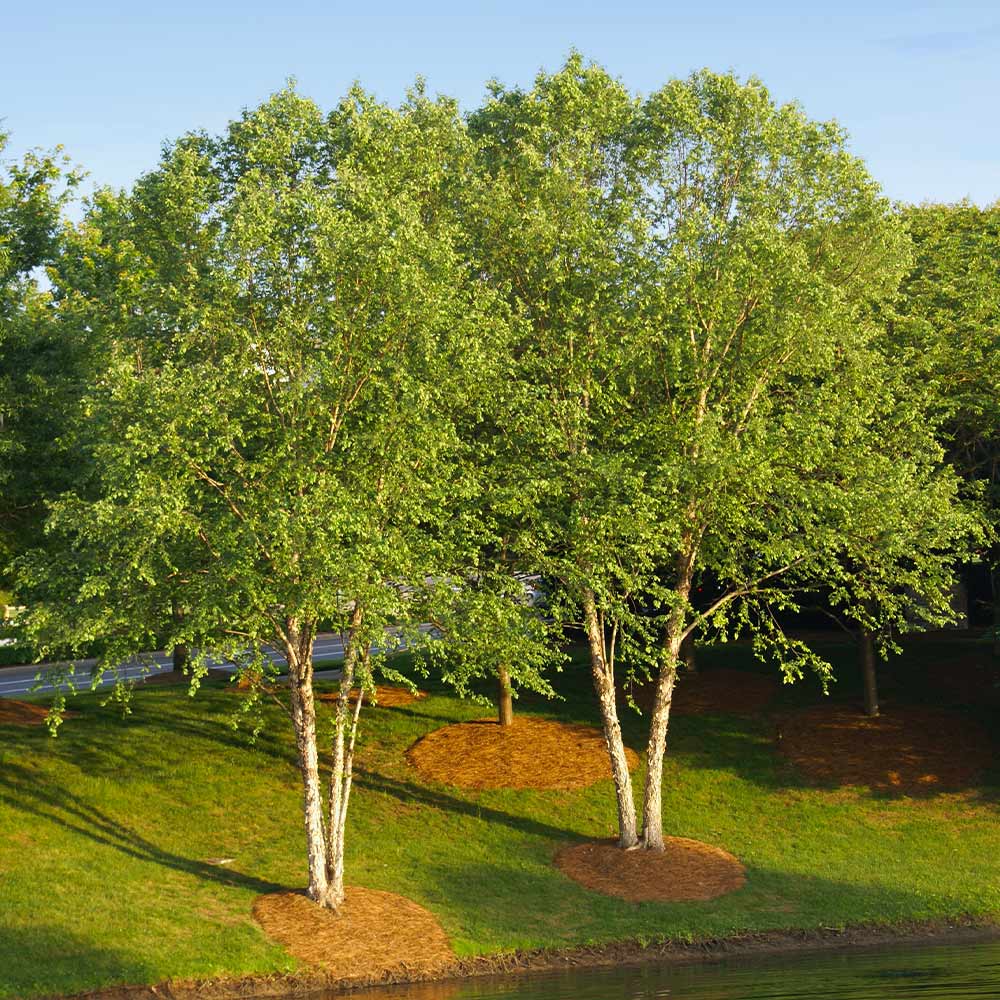
More tolerant of dry conditions than other birches, the river birch, as the name implies, can grow in damp soils where other trees can’t. Its natural habitat is swampland and floodplains near rivers and bogs where soil is cool and moist, so it is a good choice for planting in wet areas in residential landscapes. A multi-stemmed tree with attractive exfoliating white bark, it’s among the fastest-growing shade trees. It grows at a rate of 3 feet per year, and reaches 40 to 70 feet tall (and almost as wide) in zones 4 to 9. Relatively trouble-free, river birch is susceptible to birch leaf miner, a type of insect. It’s a good choice for a specimen tree in the yard, where its medium-to-dark- green leaves will turn yellow in fall.
RELATED: Trees and Property Lines: 8 Things All Neighbors Should Know
19. Silver Maple (Acer saccharinum)
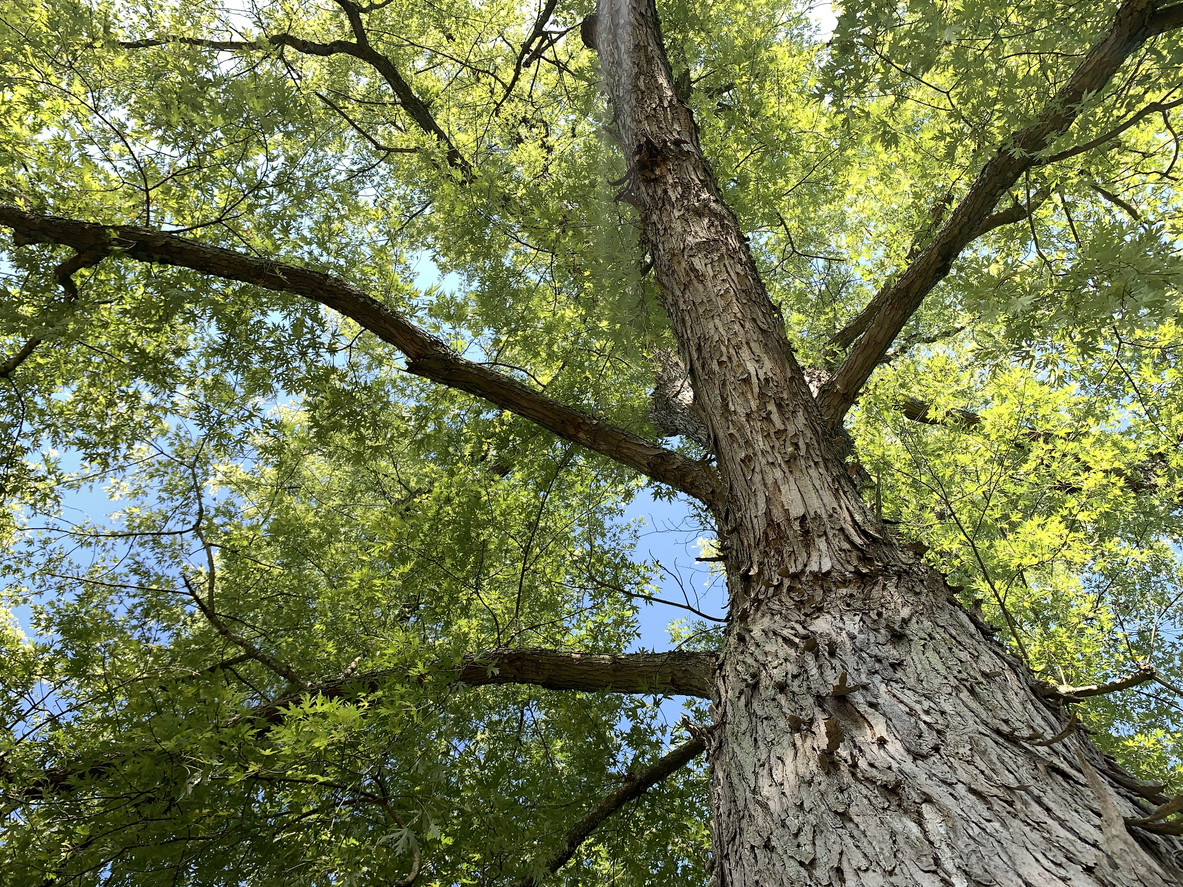
Known as soft maple or river maple, the silver maple performs well in wet areas because of its native habitat in the floodplains. This is a tall, fast-growing tree that adds 2 feet per year and tops out at 50 to 100 feet tall. It becomes ragged at maturity, with grayish-brown bark becoming shaggy with age. Silver-backed green leaves shimmer in the breeze, but autumn colors are not spectacular. Silver maple produces red, yellow, and silver flower clusters in spring, followed by pairs of “winged” seeds. Grown in zones 3 through 9, this maple prefers full sun to partial shade and tolerates a wide range of soil conditions. Its vigorous root system can damage foundations, sewer lines, pipes, and pavement. It’s prone to limb breakage.
20. Tulip Poplar (Liriodendron tulipifera)
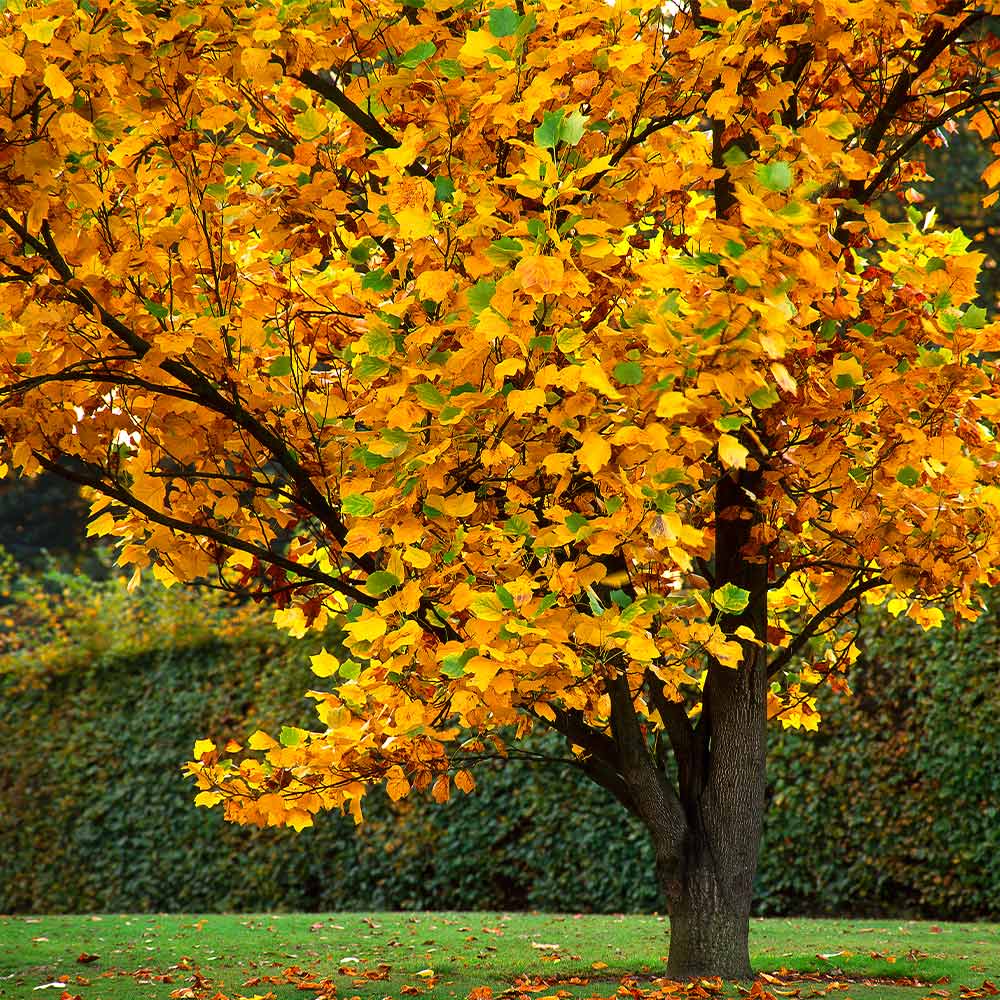
Also called a tulip tree or yellow poplar, but actually related to the magnolia, the tulip poplar is the tallest of the eastern hardwoods. With a straight trunk and a high canopy, it makes an excellent tree for shade. Growing 3 to 5 feet per year, it can reach 120 feet, with a spread up to 50 feet wide. Bright-green uniquely shaped leaves turn golden yellow in the fall, but springtime is its glory, with fragrant tulip-shaped flowers in green and yellow-orange shades that appear in May and June. Grown in zones 4 to 9, it prefers full sun to partial shade and has few pest problems.
21. Wax Myrtle (Morella cerifera)
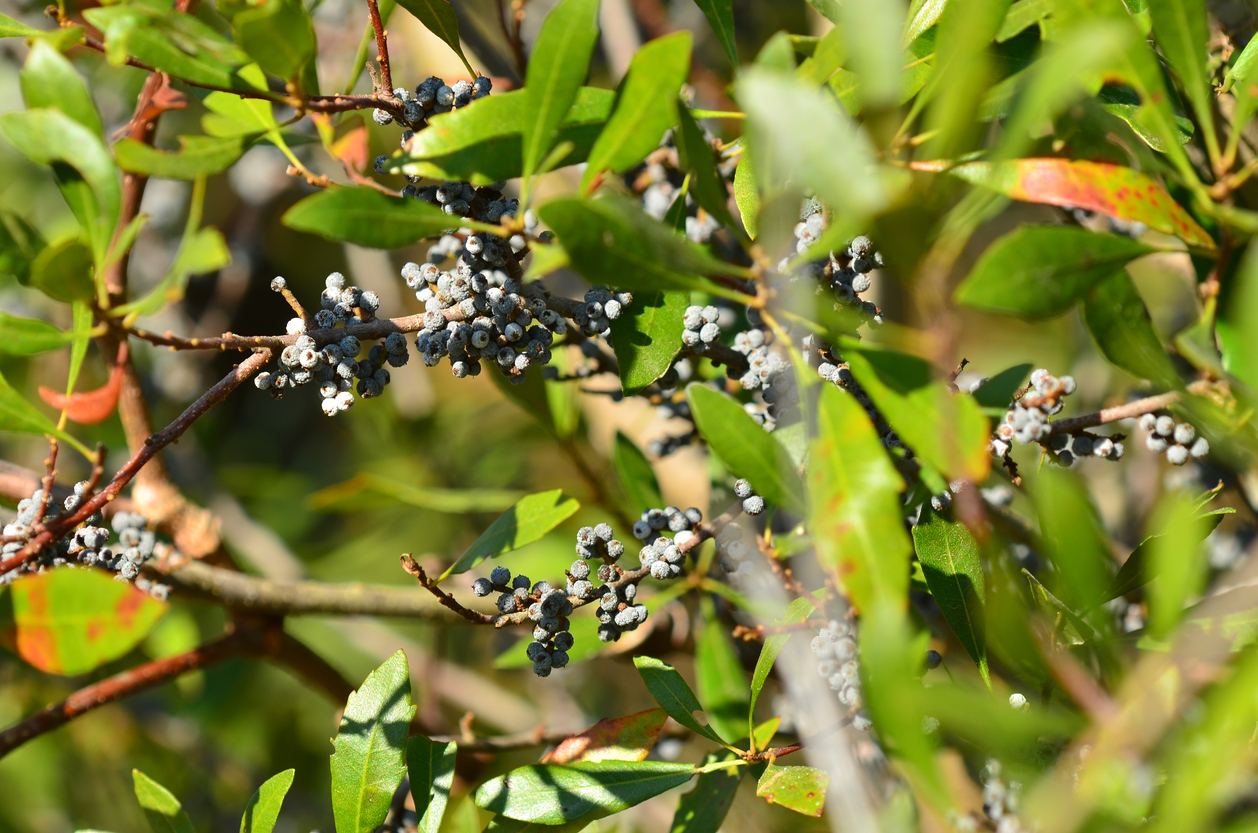
The wax myrtle or bayberry tree is drought-resistant and grows 5 feet a year until reaching nearly 20 feet tall, just high enough to create shade and privacy in a small yard. This shade tree needs a little more winter warmth than some, growing best in USDA zones 7 through 10. Because it’s evergreen, this is a good choice in landscapes that need some winter privacy screens or year-round color. Wax myrtle also grows into a shrub-like form with multiple trunks and a shorter height. Avoid planting it within a home’s defensible space, since some compounds in the tree are flammable.
RELATED: Solved! These Are the Evergreens That Grow the Fastest
22. Weeping Willow (Salix babylonica)
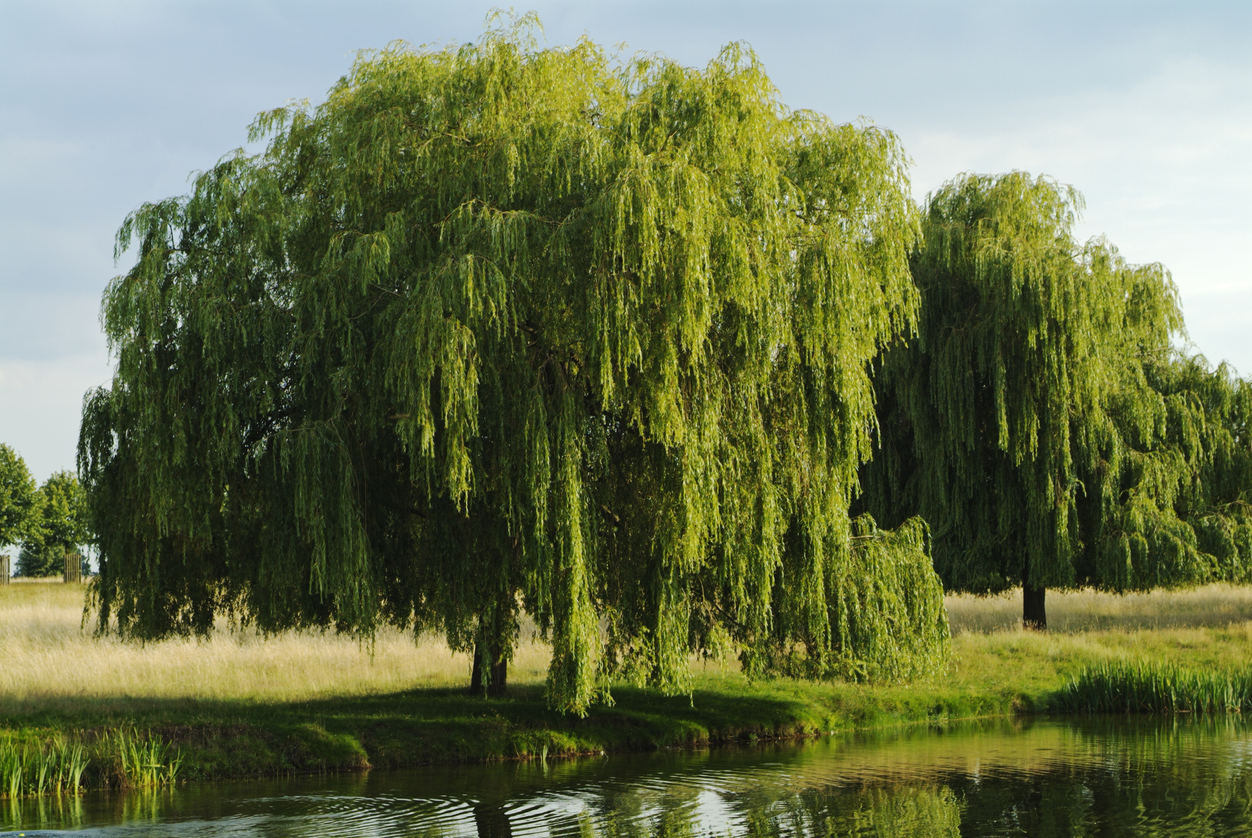
Graceful and dramatic, the weeping willow can spring up more than 3 feet a year. These dramatic trees are cold hardy only to USDA Zone 6 and do best in moist, acidic soil. They even can tolerate some standing water, and can help prevent erosion. Use caution planting a weeping willow near your home, in a small yard, around sewer lines, or in drought-prone areas.

